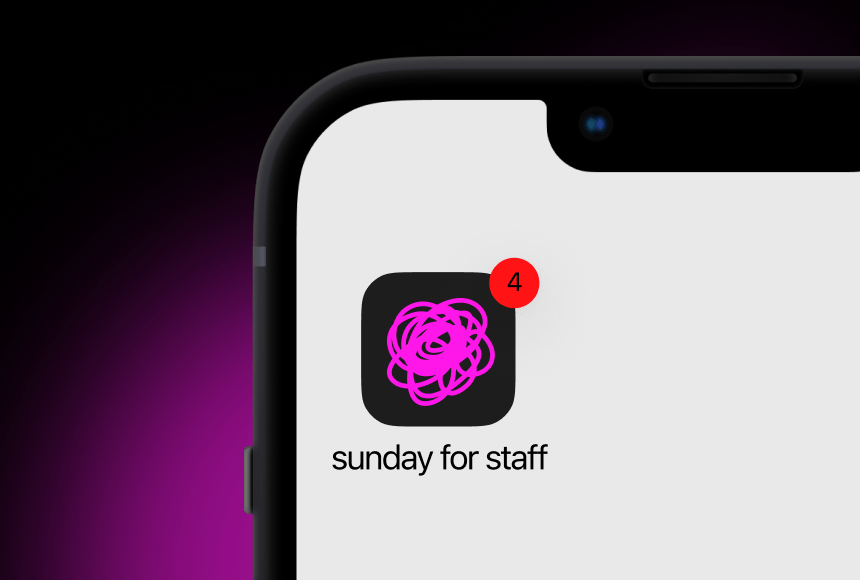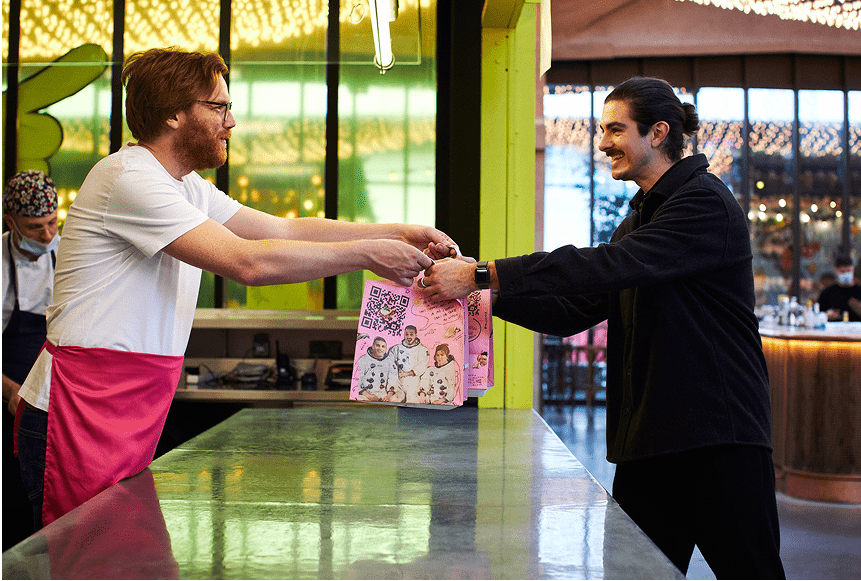
A Warm, Expert Guide to Presenting Gratuities in Restaurants
The Importance of a Thoughtful Tip-Display Approach
Of all the hospitality dilemmas that restaurants face, finding the right way to suggest tip amounts is among the trickiest. If you push too hard, guests might feel they’re being pressured. If you stay silent, your staff could miss out on well-deserved gratuities. The balance is delicate. Tipping, at its best, should be a natural, positive exchange between guest and restaurant—yet we know it’s rarely that simple. Different cultural norms, personal preferences, and methods of payment all intersect to create a complex situation.
In the UK, tipping is influenced by everything from the quality of service to the overall dining experience. Some restaurant owners express concern about how to discreetly suggest tips without making anyone uncomfortable. And that’s precisely what we’re tackling here: how to display tip options so diners feel empowered, not embarrassed; and how you can maximise tips ethically, without raising eyebrows.
Let’s explore actionable steps—straight from an industry lens—to help you integrate tip suggestions in a way that’s welcoming, transparent, and fair.
The UK Tipping Landscape: Trends and Figures
Tipping customs vary widely from country to country. In the United States, it’s almost compulsory, with expectations around 15%–20%. In parts of Europe, a service charge appears automatically on many bills. For the UK, it’s a middle ground: many diners tip about 10%–12% of the bill, but in more casual places, guests might leave spare change.
A 2022 YouGov poll showed that while Brits are generally supportive of tipping, they dislike feeling obligated or judged. The poll emphasised a core takeaway: clarity matters. When customers know exactly how tips are handled—who receives them, how they’re split, and why they matter—they’re more likely to accept suggested tip options.
So, how do you integrate these insights into your restaurant? It starts with the story you tell about tipping and the manner in which you present it.
Digital Payment Methods: A Seamless Way to Suggest Tips
If you’ve been in the industry for a while, you’ll know that payment methods have evolved at lightning speed. Only a decade or two ago, cash was king, and tips might be left on the table in coins. Now, with the rise of contactless and smartphone-based payments, less physical currency is changing hands, which significantly affects tipping behaviour. Many diners simply don’t carry enough change, so a prompt for adding a tip to a card transaction can be a useful nudge.
Still, the question remains: how to design that prompt so it feels natural? Here are a few key recommendations:
- Integrate tip options directly into the payment terminal: Whether you’re using a modern card machine or a mobile solution, ensure that after the total bill is displayed, clear tip percentages or customised amounts can be selected with one tap.
- Offer round numbers or percentage options: Ideally, display something like 10%, 12.5%, 15%, and “Other” (or “No Tip”). This range allows diners to choose quickly without feeling cornered.
- Use wording that’s polite and optional: A simple, friendly phrase: “Would you like to leave a tip?” or “Add a gratuity?” can put diners at ease. Avoid “You must tip” or any guilt-driven language.
A worry for some owners is that even a polite digital screen might seem pushy. However, in our tech-driven world, it’s become second nature. The key is to design the digital flow so it looks like part of the natural checkout process—no jarring pop-ups, no flashing text, just a seamless step in the overall payment experience.
sunday’s QR-based payment solution, for example, helps restaurants seamlessly present tip options at the moment of bill settlement. When the guest scans the code, they are prompted to add a gratuity—if they wish—before finalising their payment. It’s user-friendly and unobtrusive.
Designing a Clear Tip-Display Strategy
Many restaurants find themselves at a crossroads when deciding how to spotlight tipping on their menus or payment screens. You don’t want the approach to feel trivial or too commercial. Yet it’s equally important that your staff receive the recognition they deserve.
Below are ways to organise your tip-display strategy so nobody feels uneasy:
- State tipping policy on the menu or website: A short line such as “An optional service charge of 12.5% will be added to your bill. 100% goes to our team. Thank you!” can clarify everything. Although some prefer not to add an automatic service charge, transparency is key. People like to understand how gratuities are handled.
- Avoid ambiguous or hidden fees: If you do add a service charge, make it clear that diners can remove or adjust it if they prefer. Springing unsuspected costs on guests can strain trust.
- Place tip prompts at the end of the payment process: If you’re using a point-of-sale interface or mobile payment, ensure that tip selection appears after they see the final total. Interrupting them mid-transaction can feel intrusive.
- Offer multiple tip options: As mentioned, show a few percentage choices plus a custom field, letting diners make up their minds in a matter of seconds.
A well-structured tipping strategy acknowledges patron autonomy. Guests should feel in control: free to reward service if they wish, or free to skip. The best display invites generosity without demanding it.
Staff Training and Confidence: Reducing Awkward Moments
Often, the greatest source of tipping anxiety begins with frontline staff. When does the server mention a tip? How do they handle questions about service charges? Training your team to confidently and comfortably talk about gratuities can eliminate that awkwardness altogether.
Here’s a short training framework:
- Know your policy inside out: If your restaurant automatically adds a gratuity, clarify this to the entire team, ensuring they can explain how the tips are distributed. If it’s purely voluntary, staff should know any recommended ranges.
- Use positive, inclusive language: Instead of “I appreciate tips,” say, “If you’re happy with the service, feel free to leave a gratuity—it’s split amongst the entire team.” Shifting the focus from personal gain to collective reward can help guests see tipping as a group thank-you.
- Read the room: Not every table wants a chat about gratuities. Encourage staff to sense the mood. A smiling mention of “We appreciate anything you’d like to leave” can be enough.
- Be transparent, not pushy: If a guest asks “Is service included?” the answer should be straightforward: “No, but tips are always appreciated” or “It’s included, but you can adjust if you wish.” Staff honesty fosters trust and ensures repeat business.
Confidence is calming. When your staff radiates genuine warmth, diners sense the authenticity. If you combine that sincerity with a user-friendly payment process, the topic of tipping becomes less intimidating for everyone.
Avoiding the Performance Pressure: Let Technology Speak for You
Sometimes, diners feel like eyes are on them the moment they see the tipping screen. Will the restaurant staff be offended if they pick the lowest tip option? Is someone watching them decide? These concerns can amplify the tension, slow down the process, and tip the vibe from friendly to uncomfortable.
Herein lies the benefit of discreet digital technology. Solutions like sunday’s QR code payment offer a moment of privacy. Instead of the server waiting by the table with a card machine, the customer can simply scan, pay, and tip on their phone. This extra mental space allows guests to choose calmly, without the sense of being judged.
That said, it’s crucial that technology is introduced as a friendly aid, not a sterile replacement for personal interaction. Let staff mention the digital payment option in a welcoming tone, such as “Whenever you’re ready, vous can scan the code to settle up. Our system lets you add a tip if you’d like—up to you!”
Encouraging Patron Feedback: Tips and Reviews
Although diners can show appreciation through tips, online reviews also hold immense value for restaurants. These reviews influence new customers, shape your online presence, and ultimately boost or hinder your business. Encouraging guests to leave a review alongside a gratuity can be a double win.
In practice, consider integrating a gentle nudge within your payment flow. For instance: “Thank you for visiting our restaurant. If you have a moment, we’d love your feedback. Tips and reviews help us continually improve our service.” The key is to keep it optional and polite.
Again, technology can streamline this. sunday’s approach includes an option for guests to post a Google review right after they settle the bill. Since everything happens in one place, it requires no extra steps for your customers—just a few taps from scanning to paying to reviewing.
A Real-World Case: The Cosy Corner Café
Let’s illustrate how all these principles come together with a fictional example. Meet The Cosy Corner Café, a bustling spot in Manchester known for artisan coffee and fresh pastries. Before upgrading their payment process, the owners faced a dilemma: how to gently display tip options without making customers feel uncomfortable.
Here’s their step-by-step approach:
- Menu Transparency: On the back of the menu, they added a short note: “We take pride in providing a welcoming atmosphere and great service. For parties of five or more, a 10% gratuity is automatically included. If you prefer to tip differently, let us know. We share tips across the entire team.”
- Digital Payment Upgrade: They implemented a QR code payment system that allowed customers to review their order, then select from three tip suggestions: 10%, 12.5%, 15%. Alternatively, guests could type in a custom amount or skip tipping altogether.
- Staff Training: The owners held a short workshop for their servers, reinforcing how to be transparent about tipping and how to manage awkward questions. They practised friendly phrases like, “You’ll see an optional tip screen when you pay—feel free to adjust it to what you think is fair.”
- Private Moments: Instead of the server hovering with a card machine, the guest would scan the code at their table. This gave patrons a chance to tip without feeling watched. If diners asked for help, staff would calmly guide them, always reiterating that tipping was optional.
- Review Invitations: After finalising payment, a short prompt appeared: “We’d love to hear about your experience. If you have a moment, please share a quick Google review.” Customers who left feedback often referenced the café’s friendly atmosphere and transparent approach to tipping.
Within three months, Cosy Corner Café reported a slight uptick in average tip amounts, alongside more frequent online reviews. Customers seemed to appreciate the stress-free system, and staff members found it easier to talk about gratuities. This case underscores how a holistic, well-structured method can actively enhance the relationship between restaurant and guest.
Practical Tips for Minimising Uncomfortable Situations
Introducing a tip prompt is only half the story: you also need to manage the subtle nuances of British dining culture, staff interactions, and the guest’s psyche. Below are some final, practical pointers:
- Position your card reader out of direct view: If you’re still collecting tips via a physical card machine, place the device slightly away from communal areas. This prevents customers from feeling like they’re performing in front of others when they decide on a tip.
- Train staff to maintain a neutral facial expression: It sounds trivial, but a server’s expression can be read by guests as approval or disappointment. Encourage a polite smile, regardless of the tipping choice.
- Use signage to prime diners: A small sign near the entrance—“We share tips among our staff as a token of gratitude for your visit”—sets an early expectation, normalising the practice.
- Offer non-monetary ways to show appreciation: Not every customer is in a position to tip big. Reminding them that a quick review or word-of-mouth recommendation is also valued can reduce awkward feelings of guilt.
Where to Go from Here: Building an Ongoing Tipping Culture
Creating a system for gratuities is not just about that one moment of payment. If done thoughtfully, it can become an integral part of your restaurant’s culture: an honest, open exchange where staff feel valued for their work, and diners recognise the personal care they receive.
As you refine your approach, it’s helpful to:
- Collect staff feedback: Are your servers comfortable with how the tipping message is delivered? Have they encountered any awkward scenarios that you can address in future training?
- Review your technology: If you notice an increase in tips after introducing digital payment, dig deeper. Is there a correlation between user-friendly interfaces and higher gratuities in your venue?
- Keep an ear out for customer comments: If customers feel any new system is intrusive or confusing, tweak as needed. Iteration is key.
Along the way, your restaurant’s identity grows stronger, demonstrating a commitment to fairness and transparency. This can reflect in every aspect of service, from the warmth of your greeting to the final wave goodbye.
FAQ
1. Should I automatically add a service charge?
It depends on your restaurant’s culture and customer expectations. Some businesses in the UK add a 10%–12.5% service charge for parties over a certain size or for all bills. If you choose to do so, be upfront that it’s optional. Clearly mention on menus or receipts that customers can adjust or remove it if needed.
2. How can I address customers who dislike digital tip prompts?
Offer flexibility. While many guests find digital prompts convenient, some may prefer leaving cash or adding a tip when paying at the counter. Provide both options whenever possible. Additionally, train your staff to handle questions and provide reassurance that tipping is entirely the customer’s choice.
3. Do customers actually use QR-based payment for tipping?
In many cases, yes. QR-based payment options like sunday enable guests to pay quickly, calculate tips instantly, and, if they wish, add a Google review. Because this process is discreet and user-friendly, many find it more appealing than fumbling with cash or feeling watched while entering a tip on a bulky card machine.
4. How do I ensure staff remain motivated around tips?
Start with transparency. Let staff know exactly how tips are collected, tracked, and shared. Celebrate good service stories—when customers leave positive reviews or highlight a standout employee. Recognising and discussing success fosters a sense of shared pride and motivation.
5. Are there times when it’s best not to mention tips at all?
Yes. If a table has had a disappointing experience—say their order arrived late or incorrect—pushing the tip topic can worsen the situation. Focus on resolving issues first. If they choose to tip, let that decision come from genuine appreciation, not a forced prompt.
Over time, you’ll refine your method of displaying tip options so it aligns with the character of your restaurant. Gratuities should never feel like a mandatory charge or a guilt trip. They’re a token of appreciation—worth presenting in a way that respects both your guests and your team. Embrace an honest, friendly tone, supported by appropriate technology and well-trained staff, and you’ll find that tipping can become one of the most positive elements of the dining experience.
Find out more today
Drop us your details below and we’ll reach out within the next 24
More tips means a better service.
3X more tips mean 3X better guest-experience, and 3X better staff-retention.




